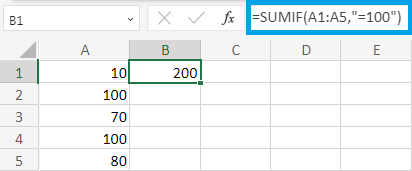

Tip: Remember that Excel calculates using the standard order of operations. If the criteria is an expression or text, frame it in quotes.Įxample 3: without quotes, if the range equals the value in cell I3: =SUMIF(I3:I12, I3)Ĭombine SUMIF with other functions for higher calculations, such as summing and then dividing, by placing the entire function in parenthesis:Įxample 4: =SUM ( (SUMIF (I3:I12,”>4”) ) /3 ) If the criteria is a number or cell reference, the function can be written without quotes. In the example below, we’re telling Excel, “Sum any values greater than 4 in the Cost column.” SUMIF functions can be written without the sum range if it’s the same as the range. For example, if you only want to total costs larger than $4, you can write: SUMIF can use criteria such as greater than or less than.
SUMIF EXCEL UPDATE
Now when you make any changes the CALCULATIONS table will update automatically (compare the two Totals columns to see the changes). Update all of the functions to match this syntax: See the difference? Instead of the range, there is the table name and header. For example, cell C4 will now be - =SUMIF(Table1,”October”,Table1) Now, you’ll need to rewrite your functions.

Make sure you do not include the COST TABLE label in your range selection: To do that in Excel, click anywhere in the table and press Crtl+T on your keyboard. In order for the calculation table to update when a number is changed or when a new row is added, you need to change the COST TABLE from a range to an actual table. _ Proper syntax:_ =SUMIFS(sum_range, criteria_range1, criteria1, criteria_range2, criteria2, criteria_range3, criteria3 …) The syntax is slightly different in that you specify the sum_range first, and it is mandatory. This produces the exact same results - $4.24.

Now, if the Month column was not sorted, then I’d need to use the SUMIFS function and specify to criteria - e.g., =SUMIFS(I4:I13,F4:F13,”October”,G4:G13,”Food”) If wanted to total food for November as well, I’d use the range G4:G13. Notice how the range only goes from G4:G8, as I only want to total food for October. Meanwhile, the formula for cell C5 - =SUMIF(G4:G8,”food”,I4:I8) Cell C4 says: SUMIF(the Month column, equals October, add the Cost column) - =SUMIF(F4:F13,”October”,I4:I13) The SUMIF function in C4 (column C is the Totals column) totals the Cost column depending on the Type of the entry. (2) Write the SUMIF Function in the CALCULATIONS table Fill them in, as shown in the screenshot below:Ĭreate a table called CALCULATIONS, and add the following headings in the first column: October, Food, Non Edible, November, Food, Non Edible, and Total - following the format below:
SUMIF EXCEL HOW TO
This tutorial will show you how this function works, as well as provide examples of how to use it. The SUMIF and SUMIFS function in Microsoft Excel is a simple, yet powerful calculation tool.


 0 kommentar(er)
0 kommentar(er)
